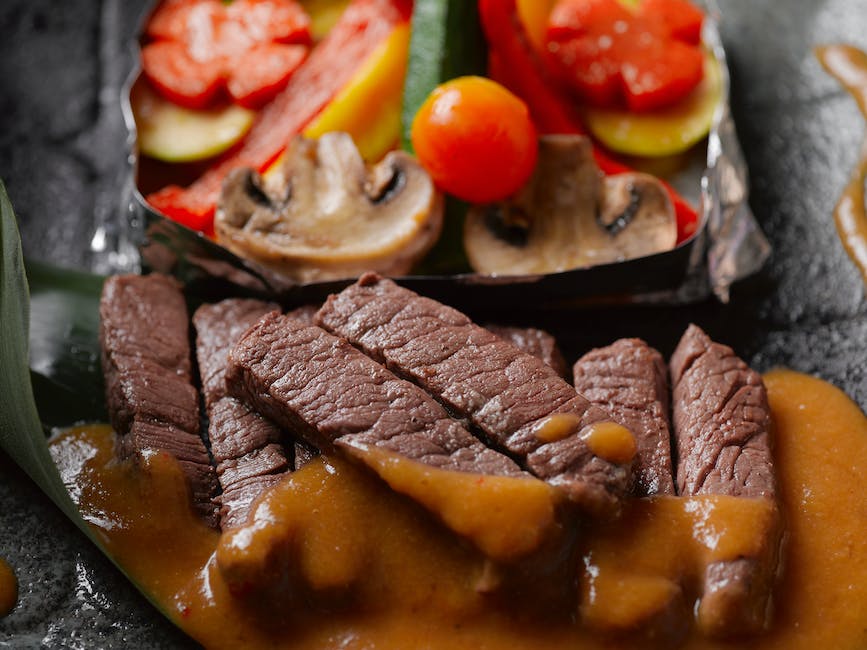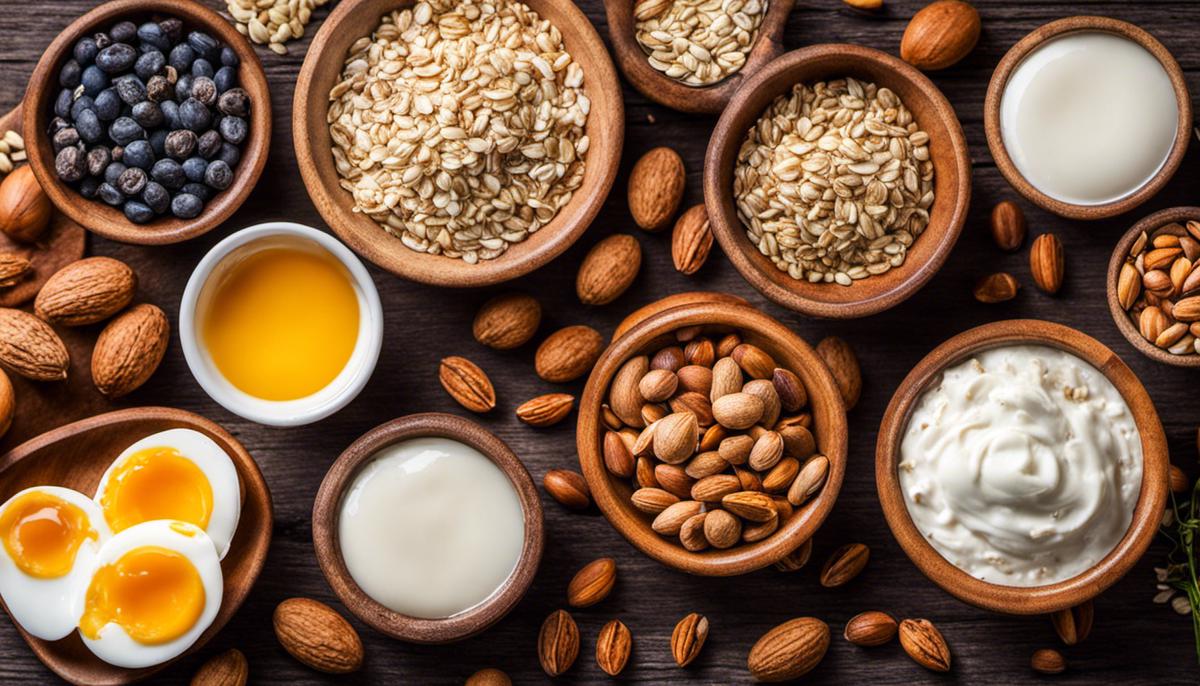Breakfast, well-heralded as the most important meal of the day, primarily acts as the body’s morning refueling stop. For this reason, a quality breakfast often includes a balance of nutrients, among which stands protein as an integral inclusion. The paramount importance of protein in our bodies cannot be overstated, as it aids in building and repairing body tissues, making hormones, enzymes, and supporting overall health and well-being. This article, therefore, aims to deepen your understanding on protein, illuminate its critical role as part of a protein-rich breakfast, and differentiate between plant and animal-derived proteins for a healthier lifestyle for all individuals. It provides helpful insights on how to read and assess food labels to identify high protein food items, and guides you on the easy incorporation of eggs, Greek yogurt, oats, nuts and other high protein ingredients into your breakfast routine.
Understanding Protein
Understanding the Importance of Protein
The human body demands a lot of protein as it’s one of the building blocks of body tissues, such as muscle, skin, and hair. But more than just being a structural element, proteins also serve as enzymes, hormones, and antibodies. They help in transporting other molecules and in cell repair, ultimately playing a pivotal role in most biological processes.
Protein provides the body with roughly 10% to 15% of its dietary energy and it is the second most plentiful molecule in the body following water. It is vital for growth and repair. Its presence in our diet is indispensable.
Why Protein is a Crucial Part of a Healthy Breakfast
Starting your day with a high protein breakfast can provide numerous health advantages. Protein takes longer to metabolize than carbs, which means it provides a sustained energy source. It also aids in keeping you satisfied longer, reducing the likelihood of mid-morning snacking.
Moreover, protein intake in the morning leads to balanced blood sugar and insulin levels, making it vital for individuals with type 2 diabetes. It can also aid in weight loss by controlling appetite and preventing overeating.
Understanding Plant-Derived and Animal-Derived Proteins
All proteins are comprised of building blocks called amino acids. Nine of these are termed ‘essential’ because our bodies cannot synthesise them, and they must therefore be obtained from our diet. Animal-derived proteins, such as those from meat, fish, eggs, and dairy, usually supply all essential amino acids, hence they are known as ‘complete’ proteins.
On the other hand, most plant derived proteins – from foods such as vegetables, grains, and legumes – are deemed ‘incomplete’ because they lack one or more essential amino acids. However, this drawback can be easily overcome by consuming a varied diet of plant-based foods, which ensures the intake of all essential amino acids.
Notably, both sources of proteins have their own benefits. Animal proteins are rich in all essential amino acids and often contain higher amounts of proteins per serve. On the contrary, plant proteins are associated with lower risk of heart disease and may provide additional health benefits due to their fiber content and other nutrient density.
When planning for a high protein breakfast, you might include dairy or eggs for a dose of animal protein; or grains, vegetables, and legumes for plant proteins. A combination of both sources can also be beneficial and provide more variety and flavor to breakfast.

Assessing Protein Content
Understanding Food Labels for High Protein Content
To ensure your breakfast is high in protein, it’s essential to understand how to read food labels correctly. Food labels display the amount of protein per serving at the bottom of the label under the heading “Protein.” The quantity of protein is typically presented in grams. It’s important to note that the size of the serving as stated on the label may differ from the portion you choose to consume. So, be conscious to adjust the protein content calculation accordingly if needed.
Food labels also often include a percentage called the Daily Value (DV) next to the protein amount. This refers to the percentage of the daily protein requirement that the serving provides based on a 2,000-calorie-per-day diet. As a general rule, a food item that provides 20% or more of the DV is considered high in protein.
Popular High Protein Breakfast Ingredients
There are plethora of ways to incorporate more protein into your breakfast. Here are some popular high protein ingredients to consider:
- Eggs: Eggs are regarded as one of the most protein-rich food sources. An average-sized egg contains about 6 grams of protein. They also provide healthy fats and other important nutrients, such as vitamin D.
- Greek Yogurt: Compared to regular yogurt, Greek yogurt contains nearly double the protein, making it an excellent breakfast choice. A typical 6-ounce serving of Greek yogurt contains 15-20 grams of protein.
- Oats: These are not just a high source of fiber but also a considerable source of protein. Around half a cup of raw oats contains 13 grams of protein.
- Nuts and Seeds: Including a variety of nuts or seeds in your breakfast can amp up your protein intake. Almonds, peanuts, and chia seeds are especially high in protein.
- Protein Powders: Adding a scoop of protein powder to your morning smoothie, oats, or yogurt can easily increase your protein intake.
High Protein Breakfast Ideas
Now that you’re familiar with these high protein ingredients, here are a few breakfast ideas:
- Greek Yogurt Parfait: Layer Greek yogurt with fresh fruits, nuts, and a sprinkle of chia seeds.
- Egg Muffins: Beat eggs and mix with vegetables, cheese, or meat of your choice. Pour the mixture in muffin tins and bake.
- Protein Smoothie: Blend your preferred fruits with a scoop of protein powder, almond milk, and a tablespoon of chia seeds.
- Oatmeal Bowl: Prepare oats with milk or water. Top with a dollop of Greek yogurt, nuts, and seeds.
- Whole Grain Toast with Nut Butter: Spread your favorite nut butter on a slice of whole grain bread.
Making sure your breakfast is high in protein will keep you full and satisfied until lunchtime, helping you maintain a healthy weight and manage your energy levels.

High Protein Breakfast Recipes
Protein-Packed Omelet
Omelets are a classic high protein breakfast choice. They can be filled with a variety of ingredients to suit your taste and nutritional needs. First, whisk two large eggs in a bowl until the yolk and whites are fully combined. Heat a non-stick skillet over medium heat and add a small amount of olive oil or butter to prevent sticking. Pour in the eggs and let them cook until they begin to set, then add your fillings. Some high protein choices include grilled chicken, smoked salmon, and full-fat cheese. Make sure any meats used are fully cooked before adding to the omelet. Once it is done, fold the omelet in half and serve immediately.
Greek Yogurt Parfait
Greek yogurt is an excellent high protein breakfast choice because it often contains twice the amount of protein compared to regular yogurt. Choose a cup of unsweetened Greek yogurt, adding a touch of honey or fruit for sweetness, if desired. Layer it with a handful of whole grain granola (but be mindful of the sugar content) for extra fiber and crunch. Add a variety of berries for added antioxidants.
Quinoa Breakfast Bowl
Quinoa is not typically thought of as a breakfast food, but it’s high in protein and fiber. Cook one cup of quinoa according to package instructions. Once done, stir in a spoonful of your favorite nut butter for some healthy fats. Top your quinoa bowl with fresh fruit, like berries or diced apple, and a sprinkle of chia seeds or flaxseeds for an extra fiber and protein boost. You could also garnish it with a spoonful of Greek yogurt for a creamy tanginess.
Peanut Butter Banana Smoothie
Smoothies can be a quick and easy way to pack in lots of protein early in the day. Blend together one banana, a cup of Greek yogurt, one tablespoon of natural peanut butter, and a handful of ice until smooth. If you need a little sweetness, consider adding a touch of honey or a few pieces of dried dates into the blender. This smoothie can be enjoyed on the go, perfect for those busy mornings.
Meal Preparation Techniques
When preparing high protein breakfasts, it’s essential to ensure that you’re keeping the meals balanced and healthy. Avoid cooking methods that require too much oil, and instead opt for grilling, poaching, or baking. When making omelets, use a non-stick pan to minimize the amount of butter or oil needed, and fill the omelet with fresh vegetables and lean meats for the most nutritional benefit. If you’re pressed for time in the mornings, consider preparing your breakfasts in advance. You can make a batch of quinoa, hard boiled eggs, or Greek yogurt parfaits in advance, and enjoy them throughout the week. Remember, balance is key, so make sure to include lots of fresh fruits, vegetables, and whole grains alongside your protein sources.

Empowered with the know-how on the importance of protein, understanding labels and practical high-protein breakfast recipes, achieving a healthier lifestyle becomes a reachable goal. Not only can you now identify high-protein food, but also, you have a new realization of the role of protein in our bodies and the advantages of starting the day with a protein-inclusive meal. Explore the world of good health by implementing these newly learnt steps. It is beneficial not just for its nutritional value but also for the exciting possibilities for delectable breakfast meals. Remember, good health begins with the choices we make every morning; make yours a high-protein one.
